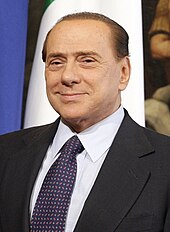2000s European sovereign debt crisis timeline
From late 2009, fears of a sovereign debt crisis in some European states developed, with the situation becoming particularly tense in early 2010.
As Samuel Brittan pointed out,[6] Jason Manolopoulos "shows conclusively that the Eurozone is far from an optimum currency area".
On 2 May 2010, the Eurozone countries and the International Monetary Fund agreed to a €110 billion loan for Greece, conditional on the implementation of harsh austerity measures.
[20][21] In late June 2011, the crisis situation was again brought under control with the Greek government managing to pass a package of new austerity measures and EU leaders pledging funds to support the country.
Greek parties failed to form a coalition Government following the election and there was widespread speculation of Greece exiting the Eurozone, termed a "Grexit".








